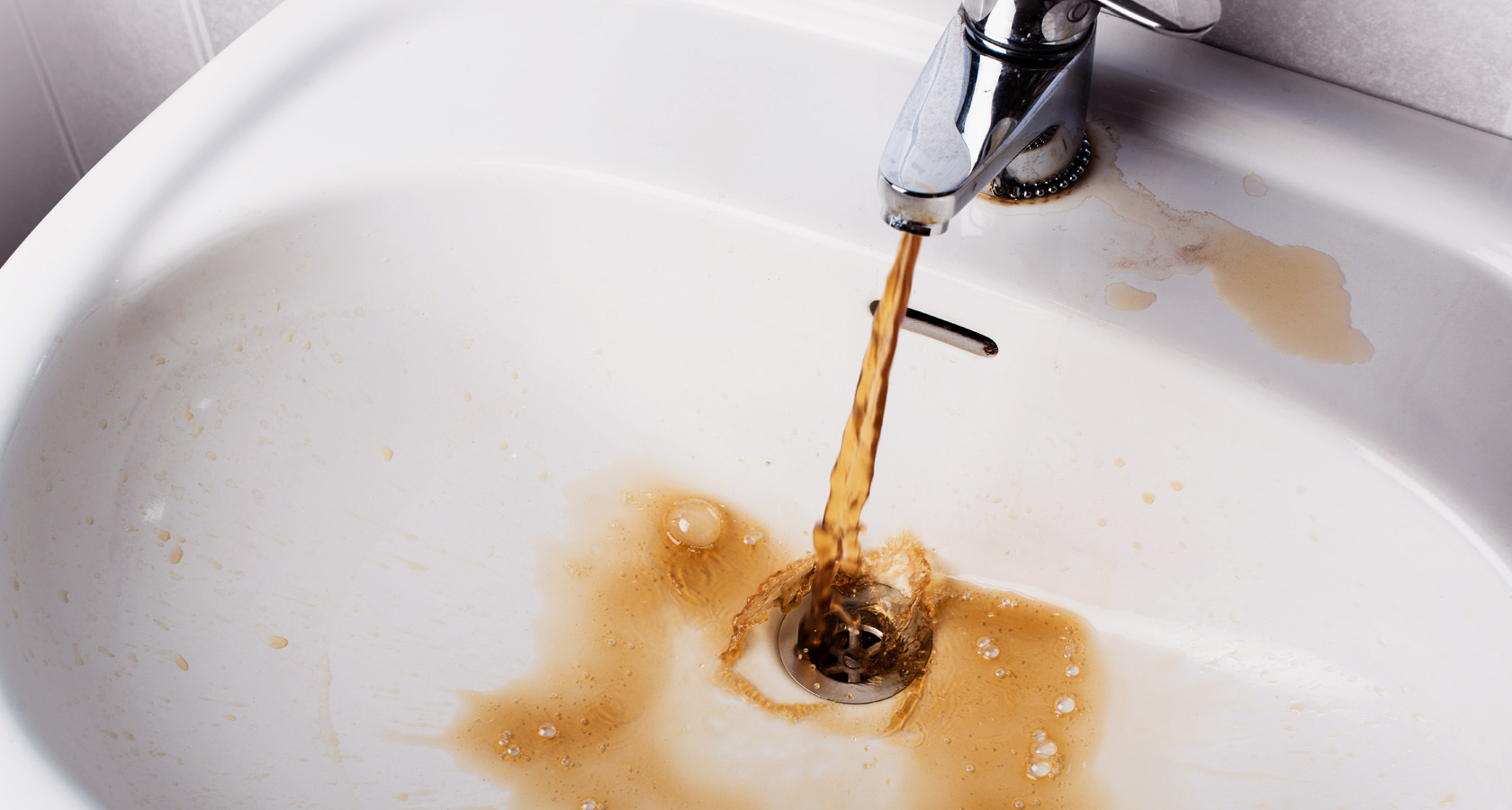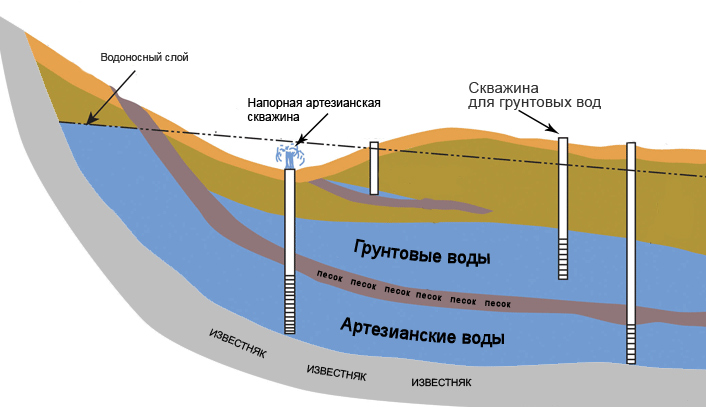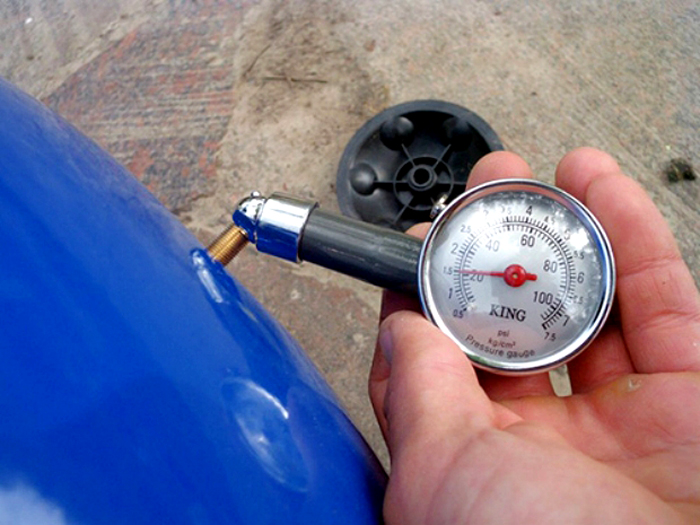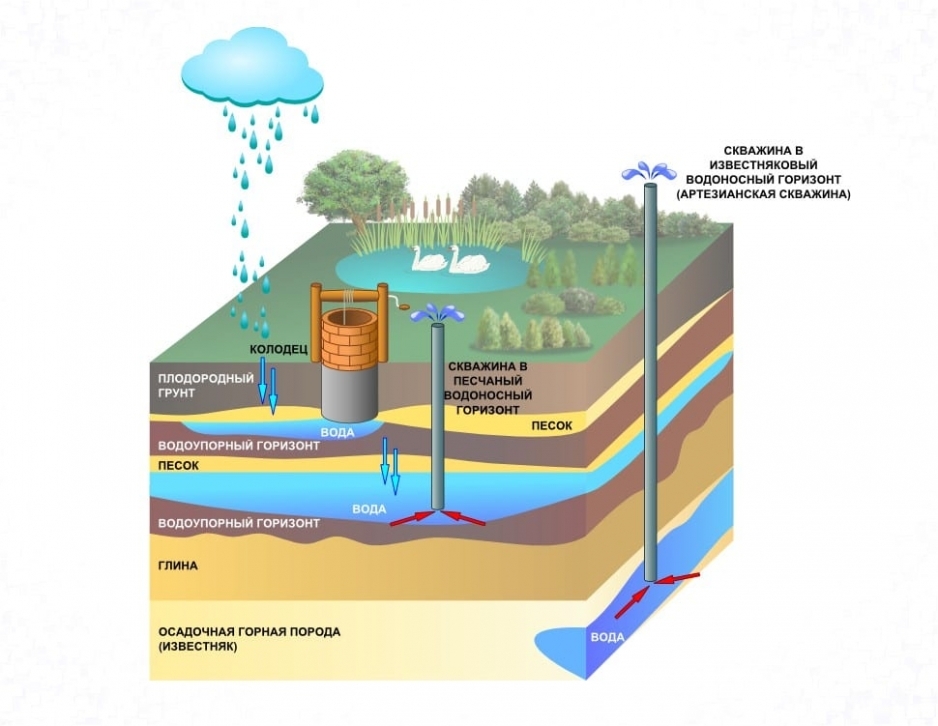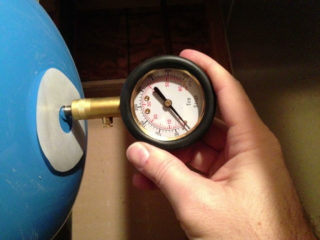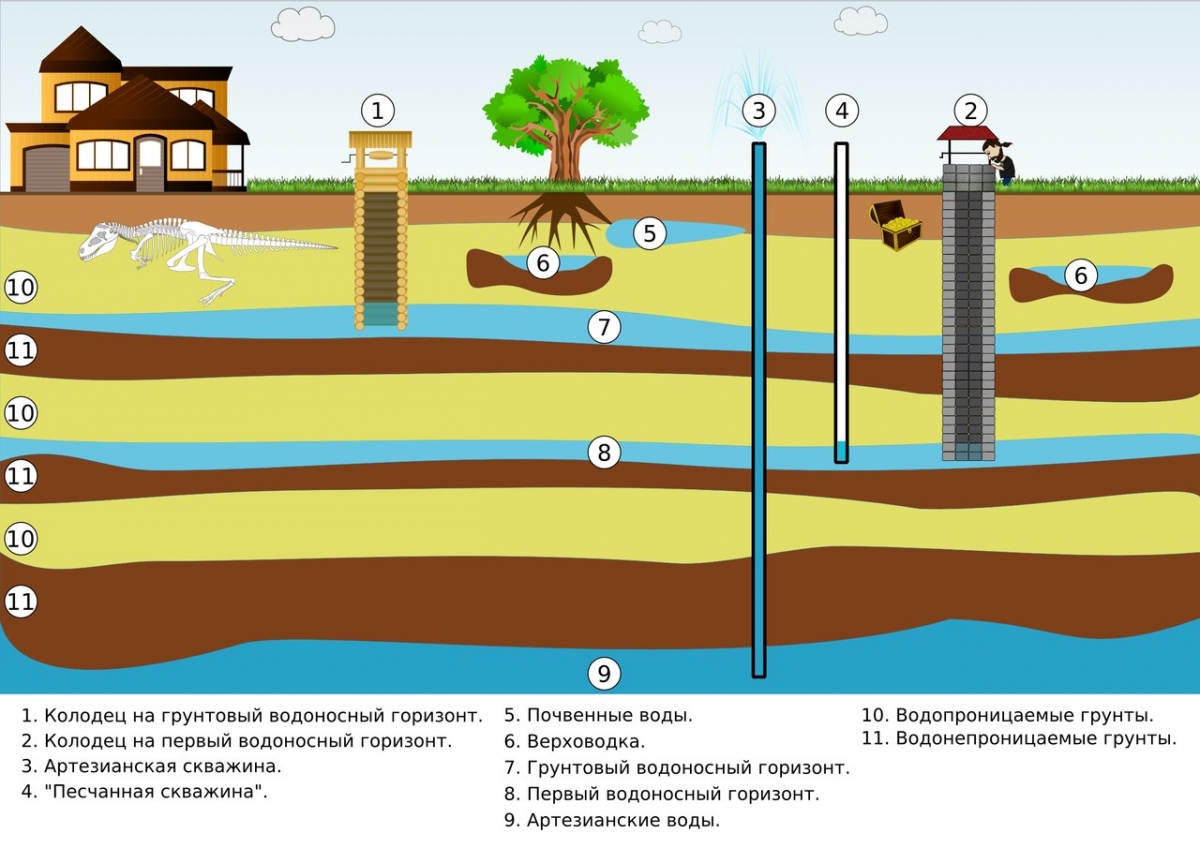The correct water supply device for the bath implies a constant supply of purified water at a certain pressure. If there are no special problems with heating water: a stove or boiler is used for this, then with the inflow everything is much more complicated. The water pressure is created by a pumping station, the equipment of which requires knowledge and skills. We will consider the main schemes and projects of water supply for village baths with various sources: from a well, a well. And we will learn how to equip the water supply in the bath with our own hands.
Sources of water supply for the bath

The first task when planning a bath is to determine the source of water supply. This could be:
- well;
- water pipes;
- well.
The simplest and most acceptable option is centralized water supply, simultaneous for the house and the bath. It is necessary to obtain permission to connect to the system, and then proceed according to the plan:
- Install pipelines and equipment inside the bath.
- Carefully study the diagram of the water pipes of the site.
- Lead a pipe from the central line to the bath and connect it.
- Start the bath water supply system.
Well, as a source of water supply for the bath
Wells have been used since ancient times as a source of water for a bath. You can run a water supply from an existing well or, if necessary, build a new one. It is inexpensive, reliable and the easiest way to supply water to a steam room. Cons of the well water supply of the bath:
- the quality of the water in the well is not guaranteed, it can be especially dirty during periods of floods or heavy rainfall;
- drops in water level are possible.
It is better to make the walls of the well from concrete rings with thorn-groove fasteners, which, in the event of soil movement, will not allow deformation. The joints of the rings are additionally sealed so that water from the upper layers does not penetrate into the well. The bottom is covered with gravel and laid with geotextiles - a kind of filter is obtained.

If there is no well on the site, and the problem of water supply to the bath is urgent, you can equip Abyssinian well.
It is a pipe that is driven into the ground up to the aquifer. Such a water supply system for a bath is good if the aquifer lies in the soil no deeper than 12 meters.
The main trick is to make the pipe correctly. Its lower end should be a spear. Above the spear, several rows of holes are drilled, which act as a filter.
The pipe is built up from above gradually, as the next section is driven in, until the water level in the pipe is 0.7 - 1 meter. A pump is installed at the top, but if the depth of the well is more than 7 meters, a submersible pump is needed to supply the bath from the well.
Well, as a source of water supply for the bath
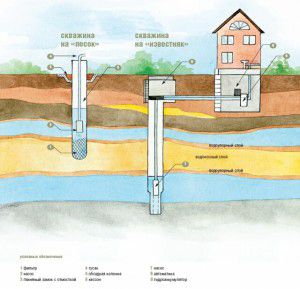
All wells that can be used to supply water to a bath are divided into two categories:
- artesian;
- sandy.
Artesian wells deep, they reach thick aquifers (35-300 meters). Artesian girls for the house water supply scheme, baths are drilled with special mechanisms and are quite expensive. Water from artesian wells comes by gravity, under pressure.
The artesian water is clean, the well will never clog, it will not silt up, the volume of water is practically unlimited.
The only negative is the high cost of the arrangement. But the problem can be solved by organizing the simultaneous water supply of houses and baths of several owners.
Sand wells usually drilled no deeper than 30 meters to the top layer of sand. Such wells in the water supply to the baths can be clogged with sand, to prevent this, a filter column is made from alternating layers of fine mesh mesh and gravel.
The advantages of water supply to baths from a sand-type well: low cost and speed of construction.
Disadvantages:
- the volume of water in the layer cannot be predicted;
- the well supplies no more than 1 cubic meter. water per hour;
- the well is silted over time.
Bath water supply device
The water supply scheme for a bathhouse and a house consists of the following elements:
- pump;
- pressure meter;
- hydroaccumulator (prevents air from entering the system);
- bypass tap - required to drain water from the system;
- pressure switch;
- check valve;
- water heater;
- water heater protection system;
- boiler drain valve;
- filter.
Pump selection

Whether water is supplied to the bath from a well or a well, a pumping station is required in any case. In the schemes and projects for the water supply of the village bath, submersible and exhaust pumps are used. The type of pump is selected depending on the depth of the water. You should also pay attention to the diameter of the well and the estimated water pressure in the system. Experts recommend staying on models with a hydraulic accumulator.
From a well or a borehole, water is supplied to the bath water supply system through an outlet pipe. The pipe must enter the well below the freezing mark, the entry point is sealed. Multilayer waterproofing is made of fiber rubber, silicone, liquid glass and tile adhesive for outdoor use.
So that the pump does not turn on all the time, a 50 liter tank is additionally installed. At the same time, it helps to equalize the pressure in the pipes.
Choice of pipes

The choice of pipes for the distribution of water supply with your own hands depends on whether the bath is used only in the summer or all year round. If the bathhouse functions only in the warm season, you can save on pipes and use flexible hoses (for strength, take reinforced ones). It is very easy to connect them together using adapters. According to the project, such a water supply scheme for the village bath does not need to be buried in the soil. Before the onset of cold weather, the hoses are collected in the barn until the next season. If the bath is used in winter, the organization of its water supply will require more work.
To connect a deep pump, pipes with a diameter of up to 32 mm are used. For the rest of the wiring, a diameter of 25 mm is suitable.
Reinforced-plastic pipes are also easy to install and operate, but rubber gaskets are used at the joints. On the street, they quickly lose their properties and need to be replaced. Can be used polymer pipes, which bend easily and are suitable for underground use for hot water supply in a bath.
The best material for the simultaneous water supply of a bath and a house is polypropylene... Although it will not be easy to assemble water supply in a polypropylene bath with your own hands - you will need a special soldering iron. Polypropylene pipes are tightly connected to each other with special adapters. There are pipes reinforced with fiberglass or foil. Both options are good for bath water supply.
Choosing a water heater
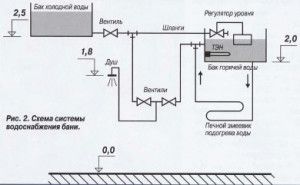
If the bathhouse is located near a residential building, you can bring a hot water supply pipe from the main boiler. The pipe should be carefully insulated with polyurethane foam. More often, hot water supply in the bath is organized autonomously.
To provide the bath with hot water, you can install a wood-burning stove.A stainless steel tank is built into the furnace and lined with brick. The heated water will keep the temperature for a long time. But modern bath owners prefer more advanced storage or flow-through water heaters.
Flow-through gas boilers are highly efficient, they can provide any amount of hot water. But their operation is quite expensive. Therefore, accumulative electric boilers are more often installed in baths. The volume of the water heater depends on the number of people attending the steam room at the same time. A capacity of 90 liters is enough for 3-4 people.
Bath water supply in winter
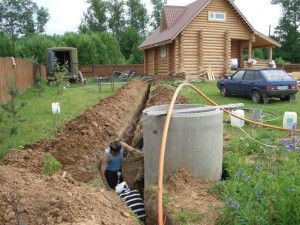
How is the water supply to the bathhouse, which is used all year round? If the water supply and heating scheme for the house and the bath is the same, there are no problems. It is more difficult when the bath is not heated and freezes in winter.
The bath water supply pipes are buried in the ground to a depth exceeding the freezing of the soil. In the middle lane, the freezing depth is about 1.5 meters, therefore, the pipes are laid at 1.7 - 1.8 m. The best pipes for such work are made of polypropylene, additionally insulated with a moisture-resistant material. So that the frost is guaranteed not to reach the pipes, they are additionally laid on a cushion made of thermal insulation and sprinkled on all sides, and then covered with soil.
If the room is not heated, it is necessary to take care of the complete drainage of water from the system after visiting the bath. Indeed, in bitter frosts, the temperature in it will almost be equal to that of the street.
In addition, the water supply system of the bath, which is used all year round, is equipped with a pressure sensor (manometer), as well as a check valve. They are installed at the entrance of the water supply pipe into the room before wiring.
For soldering polypropylene pipes, you need a special welding machine, before arranging a water supply for a bath, you should purchase corners, fittings and couplings.
Stages of water supply equipment for a bath with your own hands
- Selection and preparation of a water source.
- Laying of external water pipes.
- Installation of devices: a ball valve, then in front of the pump a carbon filter with a reserve of at least 30 cubic meters and a check valve. A pipe runs from the pump to the boiler. A tee for the cold water supply pipe is also installed here. Cold water taps are installed on the tee. And at the outlet of the boiler there is a hot water pipe, on which hot water taps are placed.
- Piping in the bathhouse. Vertical risers are installed first, after which horizontal highways are laid.
- Connecting pipes to devices, testing and starting.
At the end of the assembly of the bath water supply system with your own hands, you need to start it. First, we open the ball valve and fill all the lines. The water must flow from the pipes without interruption, which means that there is no more air in the system. Now we turn off the cold water supply taps, open the starting and turn on the pump. The pump starts at a pipe pressure of 1.4 - 1.8 bar and stops at 2.2 - 2.5 bar. When the required pressure is reached, the boiler is connected to the network.
Video about the "samovar" system for heating water in a bath:

